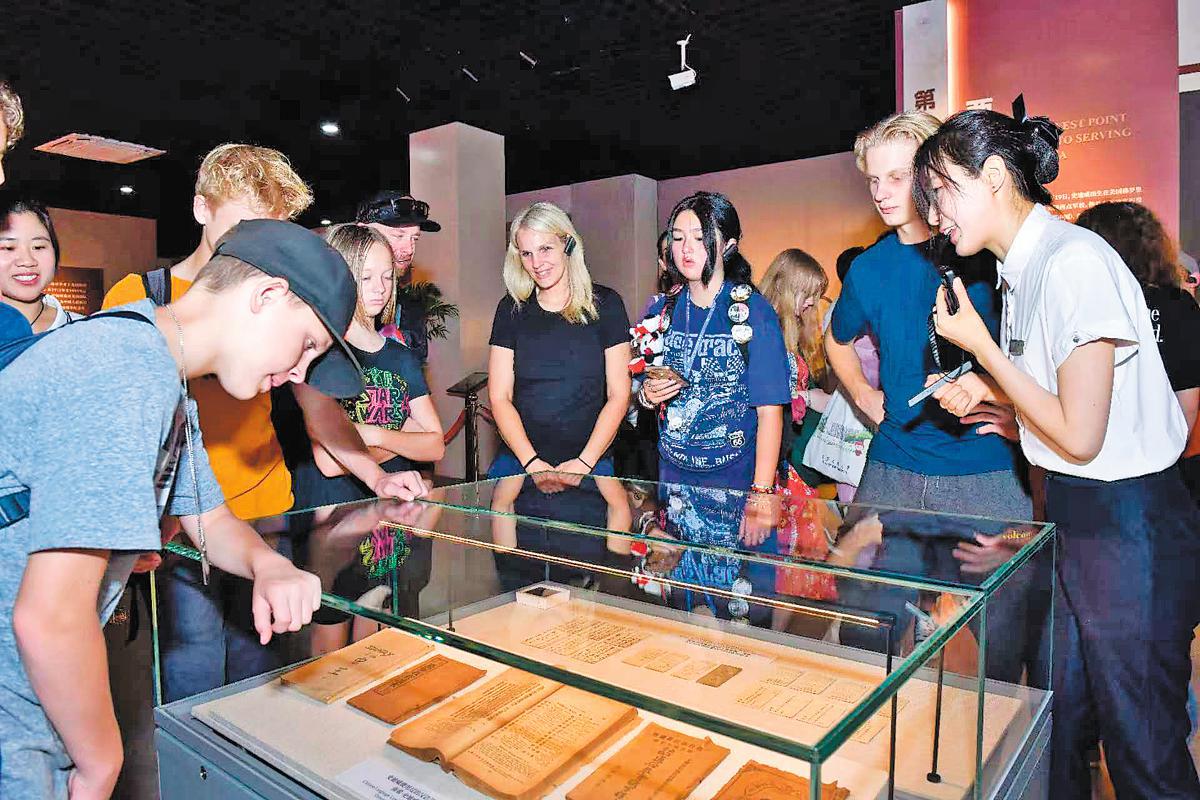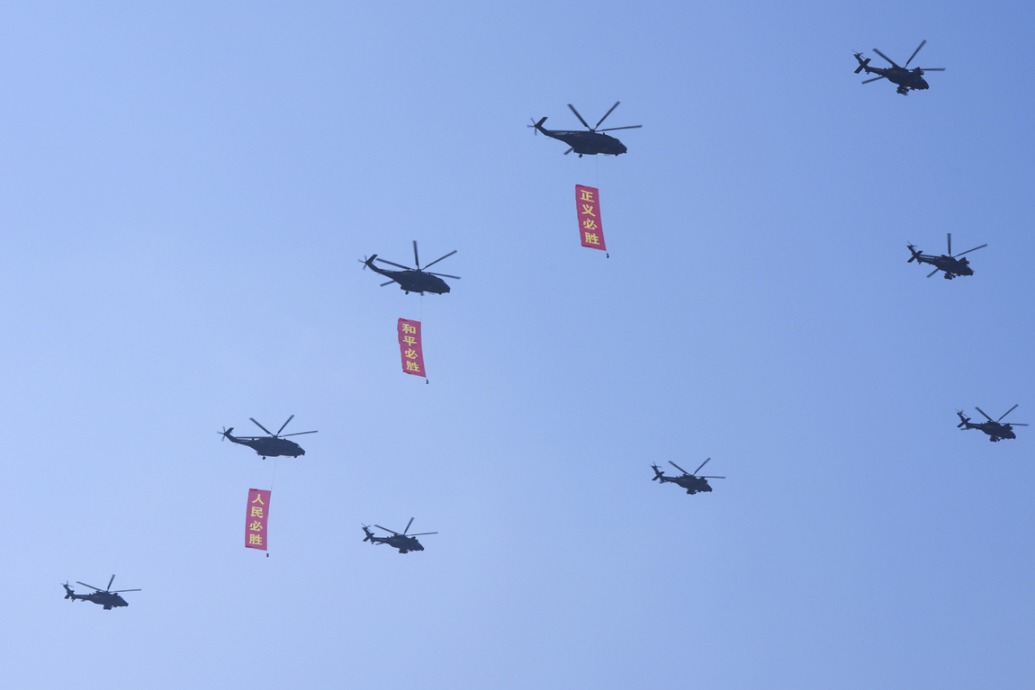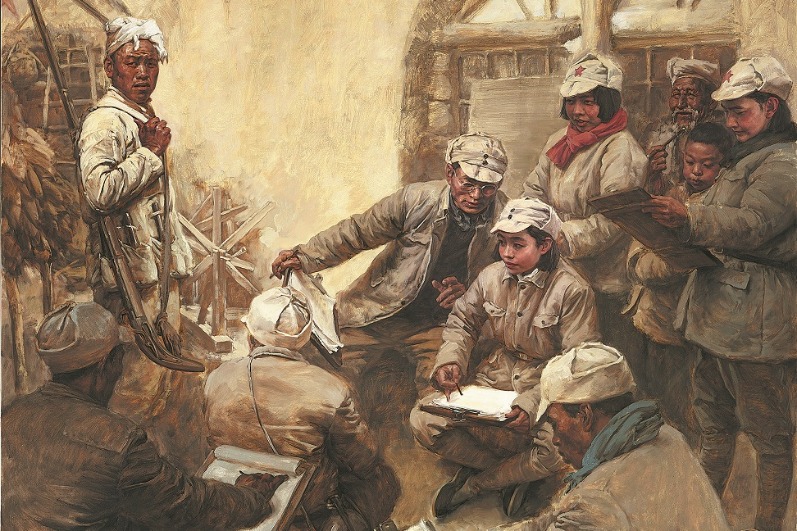China learns from war-torn past and strives for global peace, unity, cooperation


Many cities around the world bear the label of "peace". Few, however, wear it as literally as Zhijiang, a county in Central China's Hunan province, where a boulevard, a bridge, a theater, a hospital and even a lake all contain the word.
In 1945, Japanese troops signed a memorandum of surrender in Zhijiang, which was followed by similar events in more cities across China. After 14 years of resistance, a nation long scarred by war and turmoil finally glimpsed a sign of peace.
On Sept 3, commemorations marking the 80th anniversary of China's victory in World War II culminated in a military parade at Tian'anmen Square in Beijing. Those who assisted the country during the war, or the surviving family members of such allies, were invited to attend.
"Many people today take peace for granted, but it is not a word that should hang lightly. We must remember what happened and prevent such tragedies from happening again," said Wu Heping, a resident of Zhijiang whose given name means peace in Chinese. Wu's parents named him in memory of their wartime flight from Japanese troops all the way to Zhijiang — and to remind him of how precious an ordinary, quiet life can be.
Scars of the conflict
The Chinese people know the cost of war not from textbooks, but from their own scorched earth.
When Su Yuankui came to his senses after a Japanese air raid on June 5, 1941, in Chongqing in Southwest China, all he saw was ruins and blood. "Not a single structure stood unscathed," the now 92-year-old recalled. Su lost two sisters that day. Six years of bombing had resulted in an estimated 32,000 direct casualties in the city.
Across China, from 1931 to 1945, the war inflicted over 35 million casualties. Worldwide, the figure is estimated at more than 100 million.
In Nanjing in East China's Jiangsu province, 300,000 people were killed in just over 40 days following the city's fall to Japan, while in the country's Northeast, Unit 731 conducted brutal human experiments.
Around the same time, Roger-Pierre Laurens, a Frenchman living in East China's Shanghai, gathered images that documented the city's suffering. Earlier this month, his grandson, Marcus Detrez, donated 618 of these photographs to China.
While millions in the West know of Auschwitz, far fewer are aware of the Nanjing Massacre or Unit 731. Japan has long shunned acknowledgement of its wartime atrocities, and has in recent years moved away from postwar pacifism. Elsewhere, attempts have emerged to blur the historical facts of WWII alliances.
The Uppsala Conflict Data Program in Sweden recorded 61 active conflicts involving at least one state in 2024 — the highest number since the program began collecting statistics in 1946. "As the world stands at another crossroads, China's commemorations serve as a reminder to clarify our attitude to war," said Zhong Feiteng, an expert on international relations at the Chinese Academy of Social Sciences.
Power of unity
Adam Foster, chairman of the Helen Foster Snow Foundation in the United States, said the world learned the price of division during WWII — but it also witnessed the power of unity. In 1937, his great-aunt, Helen Foster Snow, traveled to Yan'an in Shaanxi province, which was the headquarters of the Communist Party of China at the time. The journalist predicted that China would rise from suffering with dignity, resilience and creativity.
The war in China was, in fact, highly asymmetric. It pitted a poor, fractured agrarian society against an industrialized invader whose steel output was more than 140 times greater. Tokyo had expected China to simply kneel. Yet its invasion galvanized great unity among the Chinese people, said Gao Hong, an expert on Japan at the CASS.
One thing is certain: The Chinese are not warmongers, but if pressed, they will fight, even when they are ill-equipped and have to struggle through rubble in straw hats and canvas shoes.
In Zhijiang, locals used agrarian tools to build a 1,500-meter runway to accommodate incoming fighter and bomber planes. Their makeshift runway later became the second-largest Allied air base in the Far East. In the course of the war, more than 2,000 Soviet pilots flew in to assist, of whom over 200 never returned. US volunteer pilots also joined the fight and braved the perilous "Hump" route over the Himalayas.
China tied down the bulk of Japanese forces for much of the war, reducing the pressure on Allied operations in Europe and the Pacific. In total, they eliminated more than 1.5 million enemy troops.
"Eighty years have passed, but the war doesn't feel distant. Humanity's challenges have not fundamentally changed," said Zhang Lianhong, a filmmaker from Chongqing. In June, she released an animated film that showed Japanese bombings and the struggle for survival along the Yangtze River.
Today, from regional conflicts to sluggish economic growth and climate change, global challenges have bound humanity together in a shared struggle.
No country can claw its way forward alone, nor can any stay immune, said He Husheng, a history scholar at Renmin University of China in Beijing. "Unity and cooperation remain the only viable path," he said.
Development & cooperation
Wednesday's commemorations were not only a time to remember history and honor the fallen, but also an opportunity to look forward. "Development is key. The tree of peace cannot grow on barren land. Without growth, peace is fleeting," said Liu Qiao, an economist and dean of the Guanghua School of Management at Peking University in Beijing.
China proposed the Belt and Road Initiative in 2013. From high-speed railways in Indonesia to solar power plants in Africa and workshops that train young technicians, the initiative has benefited people in over 150 countries, according to the Ministry of Foreign Affairs.
He Husheng advocates closer people-to-people ties, saying that a world built on friendship can truly sustain peace. China has relaxed its visa policies and expanded opportunities for people to study and exchange in the country — including 50,000 places for US youth.
Zhijiang is expected to welcome visitors from around the world this September for a peace culture event.
At a museum near the site where Japanese troops signed the terms of their surrender 80 years ago, one visitor has written in the guestbook: "Peace to the world."
Xinhua





































